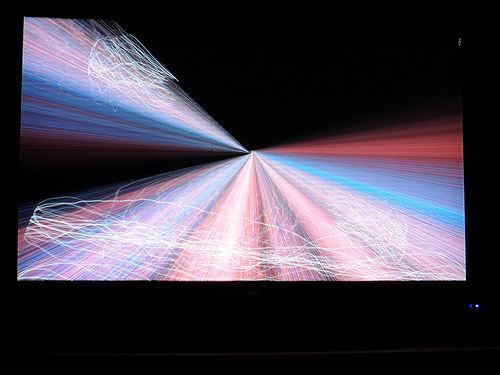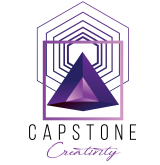Visualisations
By mhoulden on 2013-02-10 23:14:02
The aim of the research described in this article is to apply the research first where it can have the most use,and then encourage others to expand it for other domains and other users. This is in order to simplify modelling and computing for computer literate non programmers, this includes many engineers, and so enable users such as engineers to model the manufacturing and design.
The problem to be tested her is enabling de-abstraction of engineering problems from engineers’ representation to computer models and code. This is order to find out to what extent diagrammatic representations of problems can be used in order to provide modelling solutions. So to test this a source tree is created, then translated to computer code, then represented as a result tree.
To test this problem – the research examines a part of C.S. Peirce’s (1906) – ‘Prolegomena to an Apology for Pragmaticism’ call to action”Come on, my Reader, and let us construct a diagram to illustrate the general course of thought; I mean a system of diagrammatization by means of which any course of thought can be represented with exactitude”.
It isn’t possible to solve this problem and do this all at once so to limit the scope this research is restricted mainly to engineers (who often use diagrams). Engineers often model problems using computer systems, so to make this research effective these areas are prioritised –
To domain of modelling (which often requires diagrams)
Management of ontologies and related models is essential for management and understanding of complex systems.
Breaking both the research and the modelling system into testable steps improves the chances of project success. Breaking a complex systems engineering problem or project into modular steps and stages ensures that if failure looks likely it is possible to go back a step, rather than restart or abandon the project. This also informs, teaches and enables systems thinking and design. This can be achieved by transforming engineering knowledge into code in collaborative computer systems, and visualising the structure of the resultant system to all domain experts. This enables translation (both in human communication and computing model and program transformation) from the business and/or engineering focus of the domain expert end-users, to the software developers and help desk and vice versa.
Enabling, providing and supporting staff to use Semantic Web and Web 2.0 technologies can lower costs, improve collaboration, and improve staff satisfaction and retention. This is an important technology for Semantic Web collaboration. Visualisation of every stage in collaborative model creation and every part of the model enables determination of whether the model and view(s) of it are useful and correct, and so aids this sharing of human knowledge to solve problems.
A problem can be represented and shared as visual diagrams, and then translated from this abstract view to models and code. Gross (2007) argues the need for end user programming by designers using diagrams and scratchpads. Tufte (1990) explains how diagrams can be more effective than words for representing geometry. This links with the theme through our research of translating from an abstract to a concrete representation; Green et al. (2007) explain this distinction between abstract and concrete models. This distinction is more gradual than the distinction between classes and objects for object oriented programming. To achieve this it is necessary to enable translation from ontologies and Semantic Web information to diagrammatic representations and vice versa. Green et al. (2007) discuss terminology problems, and how ontologies and models and collaboration can be used to help solve this problem. A classification scheme or ontology is necessary in order to make communication precise. Ontology/ies can be used to define terms and higher level relationships and these extended for application to particular modes. Such ontology/ies can also be used to help non-specialists understand the terminology of a particular domain.
Sternemann and Zelm (1999) explain that it has become necessary to research collaborative modelling and visualisation tools, because of the business trend towards global markets and decentralised organisation structures; Green et al. (2007) also explain this.
The benefits of this research are – enabling engineers to visualise problems such as representation of a product data structure in a familiar way. This gives a visual and colour coded representation of equations. Visualisation is easier to navigate and understand than that in spreadsheets, and more maintainable. The translation, visualisation and interactions close the gap between human representations of problems, and the representations that are possible using computer languages.
The Wider Implications of this research is that this research could also be used for business modelling, process modelling, and workflow.
References
Green, S., Beeson, I., Kamm, R., 2007. Process architectures and process models: opportunities for reuse. In: 8th Workshop on Business Process Modeling, Development, and Support BPMDS07 and CAiSE’07 11-15 June 2007, Trondheim, Norway.
Gross, M. D., 2007. Designers Need End-User Software Engineering. In: End-User Software Engineering Dagstuhl Seminar February 2007.
Peirce, C.S. – 1906. Prolegomena to an Apology for Pragmaticism – http://www.existentialgraphs.com/peirceoneg/prolegomena.htm.
Sternemann, K. H., Zelm, M., 1999. Context sensitive provision and visualisation of enterprise information with a hypermedia based system, Computers in Industry Vol 40 (2) pp 173-184.
Tufte, E., R., 1990. Envisioning Information. Graphics Press.
My research – http://sites.google.com/site/userdrivenmodellingprogramming/.
Genre: Business News
Price: 0 USD
Collection Price: 0 USD
Preview
